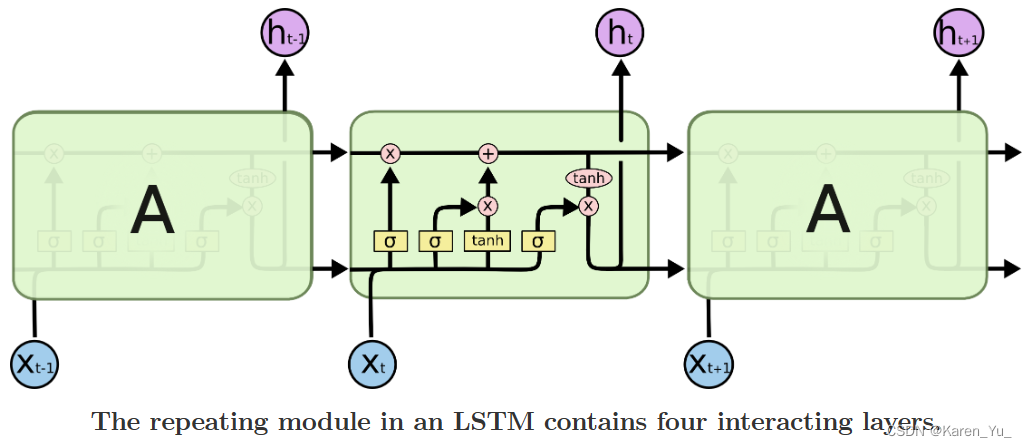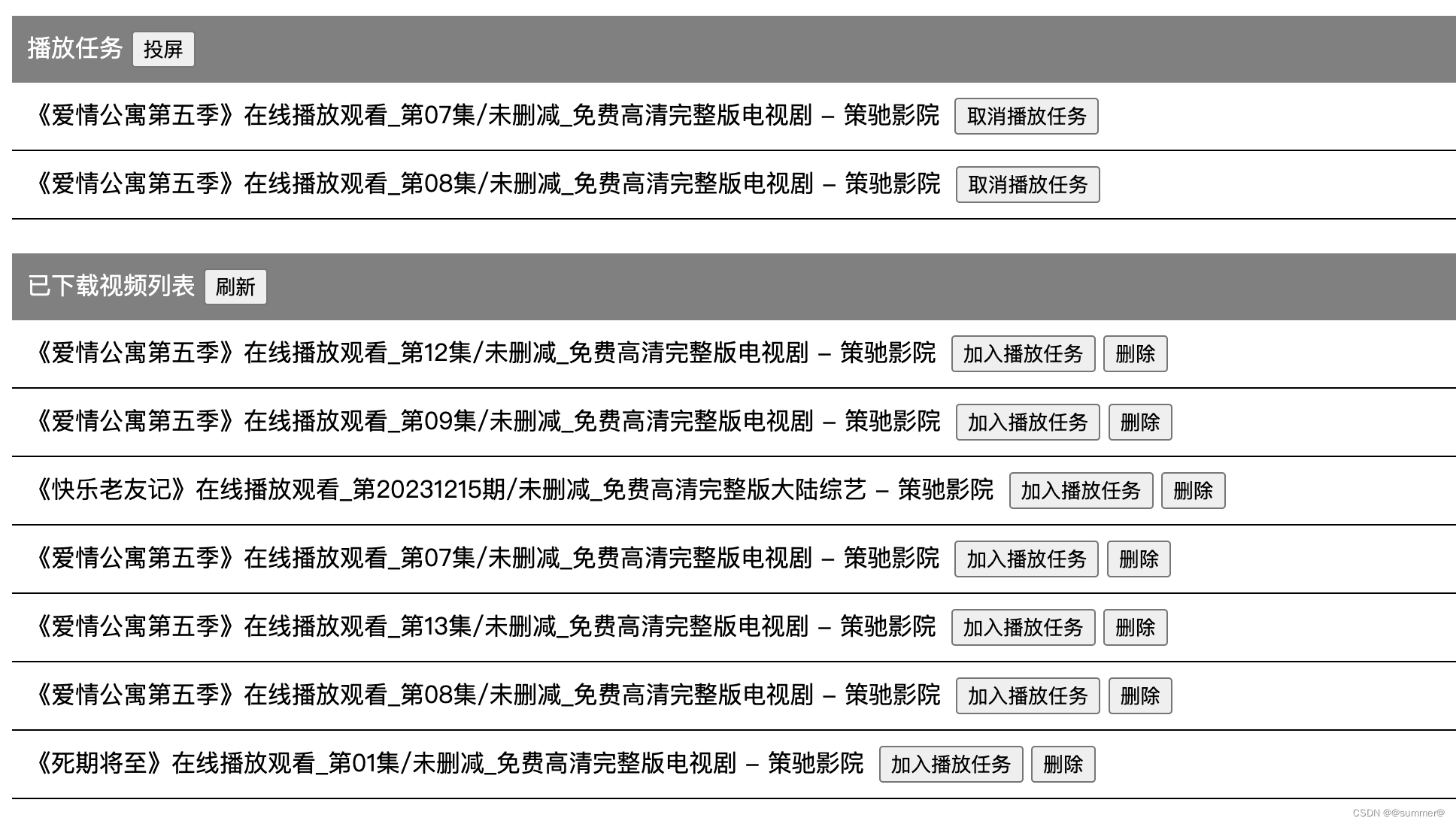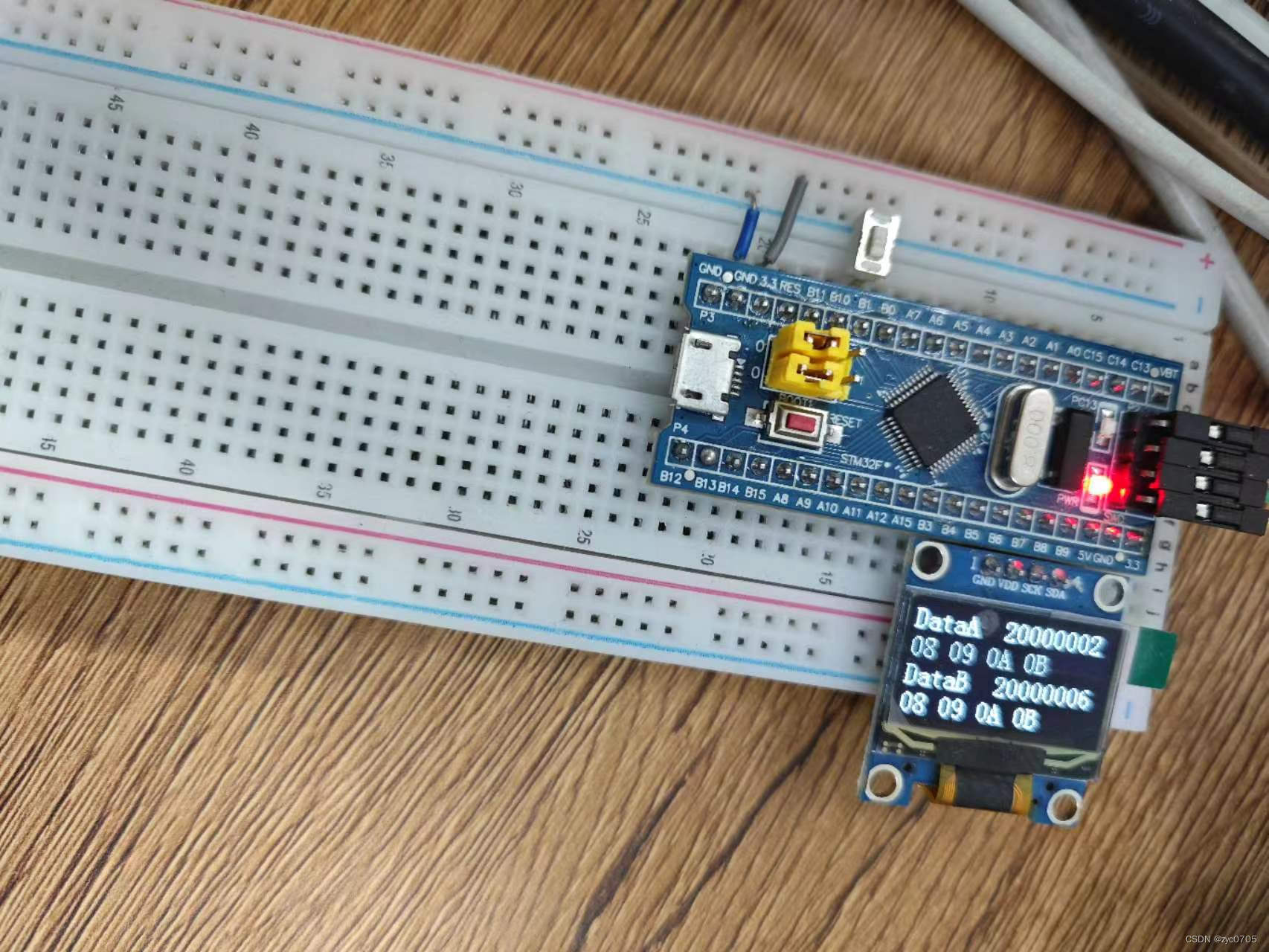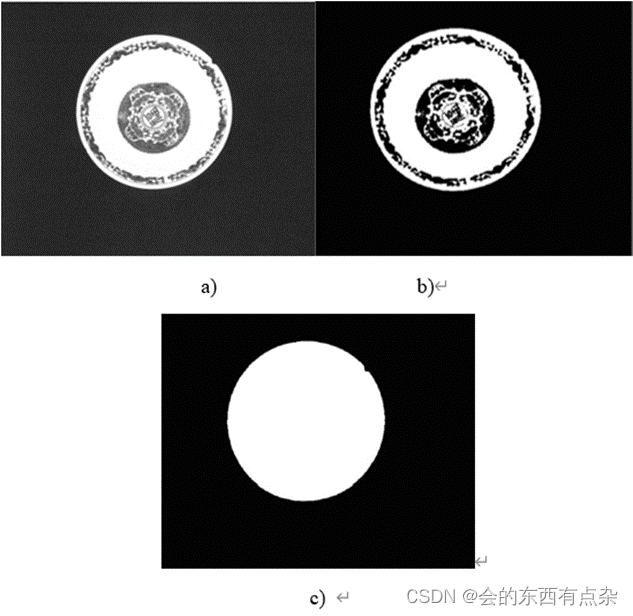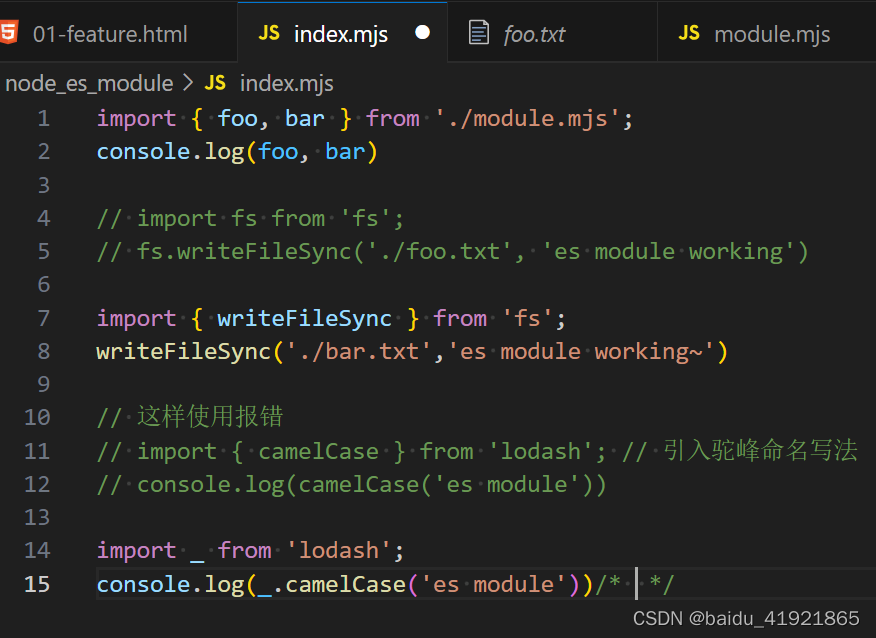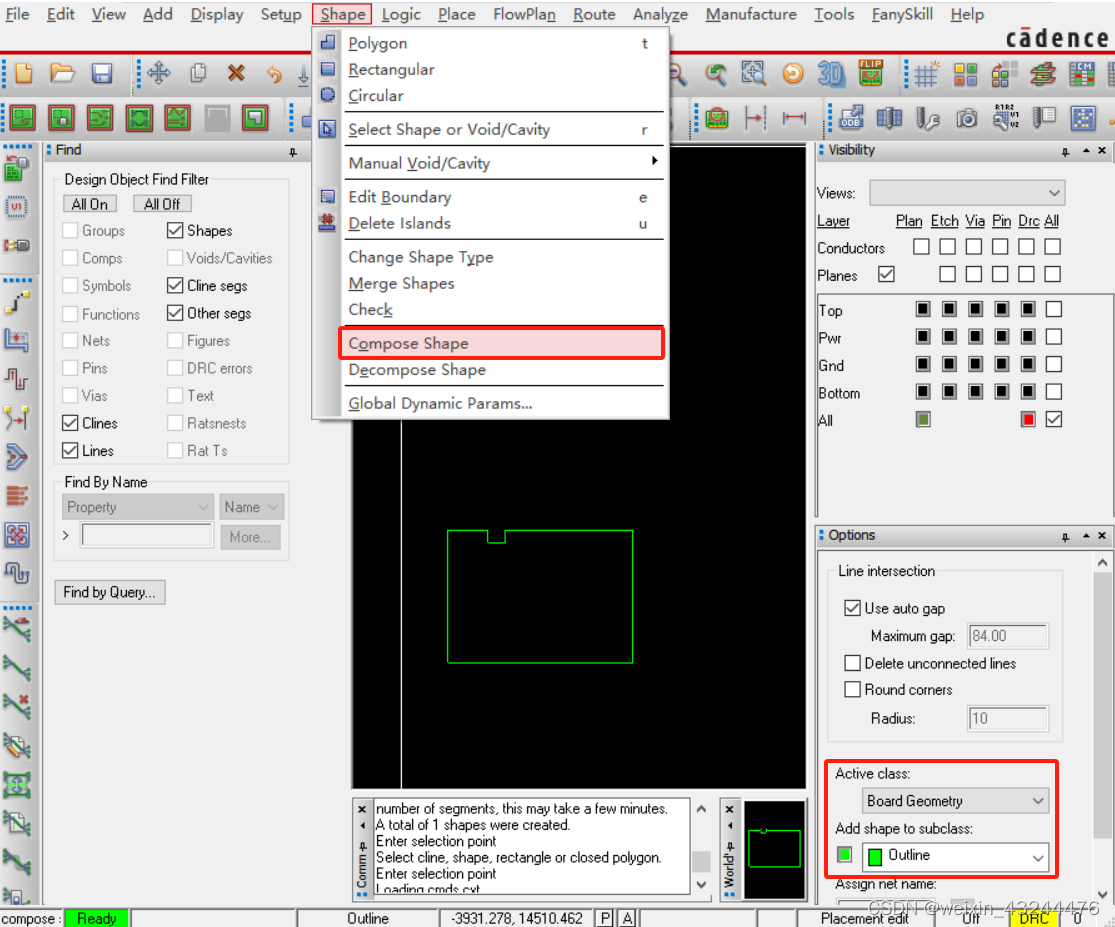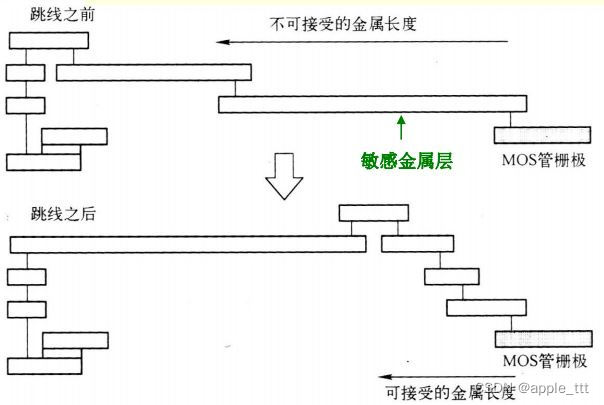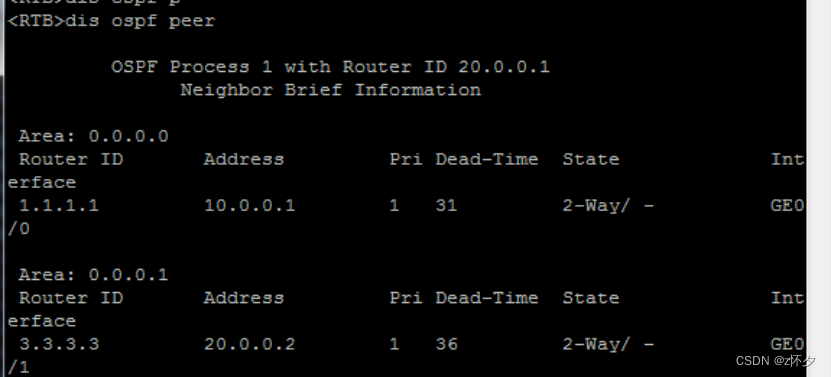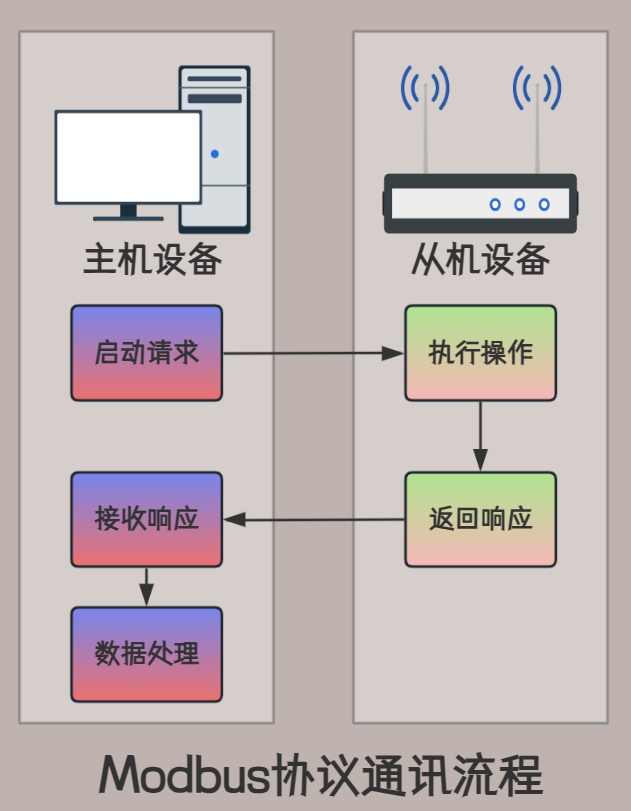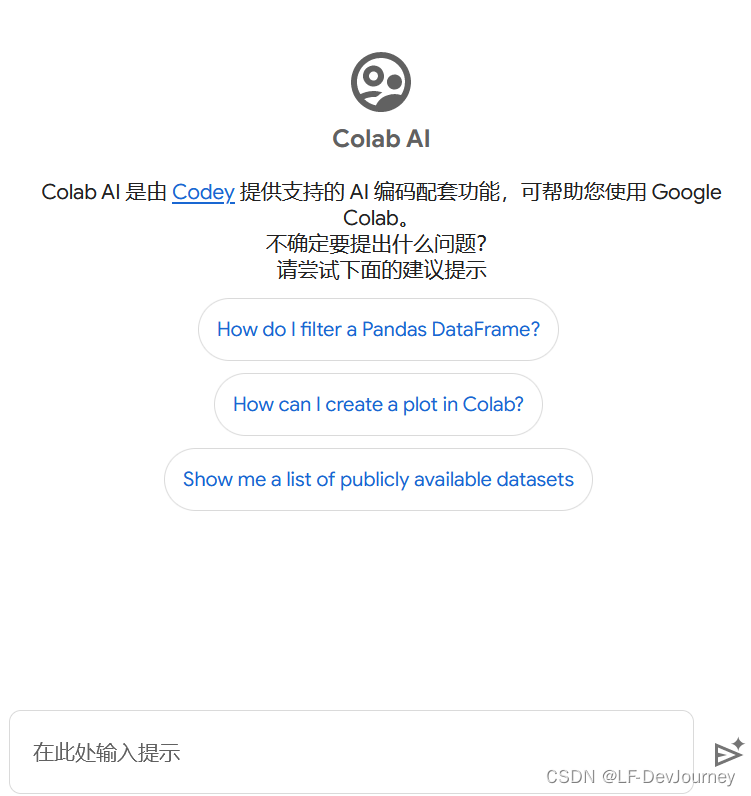一、比赛地址
CowBoy Outfits Detection | Kaggle
二、数据介绍
这次比赛的数据集一共有4879个image,需要自己划分训练集和验证集。annotation的格式是json,因此如果用yolo系列的算法会涉及到json2txt这一步。当然如果不用yolo系列的就不要这段代码了。本文使用的是yolov5,所以文章内有json2txt的代码

json里面是一个大的字典,里面有三个键值对。第一个key是info,这个是描述的数据集信息,第二个image,里面有一些图片的文件名称之类的,如下图所示,最后一个key是annotation,里面有被标记的物体的坐标,xywh等一些关键信息。这个json文件比较特殊,annotation和img对应上需要id对应,而不是文件名,在image里面的id和annotation的image_id是能够匹配上的关键信息。
接下来我就来处理这些数据
三、代码,注释
第一步当然是导包了
import os
import json
import yaml
import pandas as pd
import shutil
import random第二步是加载数据
data =json.load(open(r"D:\cowboyoutfits\\train.json", 'r'))
label = data['annotations'] # 这个就是把json文件里的annotations提取出来了
# print(label)
random.seed(34) # 随机种子的作用是为了固定每次被随机采样的img,在划分train和val用
random.shuffle(label) #打乱标签第三步是print一下每个类别的数量,以便确定valset里面的每个类别的数量
ci = [87,1034,131,318,588] #这个数据是从json文件中获得的,就是category_id
print('total:') # 打印每个类别的总数,每个类别对应一个数据
for i in ci:
count = 0 # 注意count的位置,我上次leetcode刷题放错位置了,导致一直输出0
for j in label:
if j['category_id'] == i:
count +=1
print(f'id:{i} counts:{count}')第四步
print是你的好朋友,在看不懂的时候需要print,也需要print(type())
total_id = set(each['image_id'] for each in label ) # 比较复杂,for循环获取每个label中的字典,label的类型是string,里面包含的是dict,然后在获取image_id,转化为集合
# print(len(total_id))
# print(total_id)第五步,这一步是找出符合要求的图片作为valset
val_id = set() # total_id用的集合,这里也用集合,可以保证唯一性
a, b, c, d, e = 0, 0, 0, 0, 0
# val的数量少于50=2+20+4+7+17
for each in label:
if (each['category_id'] == ci[0] ) and (a < 2):
val_id.add(each['image_id']) # 集合的属性,add,list属性是append
a +=1 # 这一步是处理图片
elif (each['category_id'] == ci[1]) and (b < 20):
val_id.add(each['image_id'])
b +=1
elif (each['category_id'] == ci[2]) and (c < 4):
val_id.add(each['image_id'])
c +=1
elif (each['category_id'] == ci[3]) and (d < 7):
val_id.add(each['image_id'])
d +=1
elif (each['category_id'] == ci[4]) and (e < 17):
val_id.add(each['image_id'])
e +=1第六步,valset的img已经找到,现在需要找出对应的annotation,下面的算法,有一个复杂度是n^2,想不到复杂度更低的,如果大家能想出来,欢迎大家踊跃评论。
# 先通过种类找出image_id,再通过image_id找出annotations
# val_ann = [each_ann for each_ann in label if each_ann['image_id'] in val_id] # 这个也不快,还难懂
val_ann = [] # 开始处理annotations
for imid in val_id: # 这样处理其实很慢的,复杂度是n*m,不过数量比较少,实际有用的结果只有n(相等时)
for each_ann in label:
if each_ann['image_id'] == imid:
val_ann.append(each_ann) # list append
print(len(val_id),len(val_ann))
# 50, 177
#不一样是因为有的一张图片有多个object第七步,打印valset的总框数
print('val_set')
for kind in ci:
num = 0
for i in val_ann:
if i['category_id'] == kind:
num += 1
print(f'id: {kind} counts: {num}') # 这个应该是物体的数量,总框数第八步,总的数据集减去valset,就是trainset
train_id = total_id - val_id # 这个是集合的减法
# print(train_id = total_id - val_id)
train_ann = []
for each_ann in label:
for tid in train_id:
if each_ann['image_id'] == tid:
train_ann.append(each_ann)
break # 找到就退出内层循环,去掉break会得到重复的结果 for循环换一下就能省掉break了,因为tid是唯一的,each_ann可能是多个
print(len(train_id),len(train_ann)) # 标签和照片数量不等是因为每个照片可能有多个标签第九步,创建文件夹,将图片放进对应的文件夹中
file_path = "D://cowboyoutfits//images//"
# print(os.path.join(file_path,'train'))
os.makedirs(os.path.join(file_path,'train'),exist_ok= True) # 在路径下创建文件夹
os.makedirs(os.path.join(file_path,'val'),exist_ok= True)
# current_path = os.getcwd()
# print("当前路径是:", current_path)
train_img = []
for j in data['images']:
for i in train_id:
if j['id'] == i:
shutil.copy(file_path + j['file_name'],"D:\\cowboyoutfits\\images\\train") #两个参数,第一个是原来的文件,即目标文件,第二个参数是要复制到的文件夹
# 使用os.path.splitext获取文件名和后缀
# file_name, file_extension = os.path.splitext(os.path.basename(file_path))
# 扩展不要可以 file_name, _ = os.path.splitext(os.path.basename(file_path))
# 扩展不要可以 file_name= os.path.splitext(file_path)[0])
train_img.append(j)
val_img = []
for j in data['images']:
for i in val_id:
if j['id'] == i:
shutil.copy(file_path + j['file_name'],"D:\\cowboyoutfits\\images\\val")
val_img.append(j)
print(len(val_img),len(train_img))第十步,将annotation放到对应的文件夹下,并将json2txt
os.makedirs(os.path.join(file_path,'labels','train'), exist_ok=True)
os.makedirs(os.path.join(file_path,'labels','val'), exist_ok=True)
train_info = [(each['id'], each['file_name'].split('.')[0], each['width'], each['height']) for each in train_img]
val_info = [(each['id'], each['file_name'].split('.')[0], each['width'], each['height']) for each in val_img]
trans = {f'{each}':f'{idx}' for (idx,each) in enumerate(ci)} # 转化为字典,type(trans)--dict
# trans = dict(zip(ci,range(len(ci)))) #不一样,没引号
# Create *.txt files for training
for (imid,fn,w,h) in train_info:
with open ('D:\\cowboyoutfits\\images\\labels\\train\\' + fn + '.txt', 'w') as t_f:
for t_ann in train_ann:
if t_ann['image_id'] == imid:
bbox = [str((t_ann['bbox'][0] + (t_ann['bbox'][2] / 2) - 1) / float(w)) + ' ',
# 计算 x 中心坐标,并进行归一化。
str((t_ann['bbox'][1] + (t_ann['bbox'][3] / 2) - 1 )/ float(h)) + ' ',
str(t_ann['bbox'][2] / float(w)) + ' ', # 计算宽度,并进行归一化。
str(t_ann['bbox'][3] / float(h))]
print(bbox)
t_f.write(trans[str(t_ann['category_id'])] + ' ' + str(bbox[0] + bbox[1] + bbox[2] + bbox[3]))
t_f.write('\n')
# Create *.txt files for evaluating
for (imid, fn, w, h) in val_info:
with open('D:\\cowboyoutfits\\images\\labels\\val\\' + fn + '.txt', 'w') as v_f:
for v_ann in val_ann:
if v_ann['image_id'] == imid:
bbox = [str((v_ann['bbox'][0] + (v_ann['bbox'][2] / 2) - 1) / float(w)) + ' ',
str((v_ann['bbox'][1] + (v_ann['bbox'][3] / 2) - 1) / float(h)) + ' ',
str(v_ann['bbox'][2] / float(w)) + ' ',
str(v_ann['bbox'][3] / float(h))]
v_f.write(trans[str(v_ann['category_id'])] + ' ' + str(bbox[0] + bbox[1] + bbox[2] + bbox[3]))
v_f.write('\n')第十一步,设定一些参数,数据集放置的路径等生成yaml文件
data_yaml = dict(
path = 'D:/cowboyoutfits', # dataset toot dir
train = 'images/train', # train images('relative to 'path')
val = 'images/val', # val images (relative to 'path')
test = 'images/test', # test images (relation to 'path')
nc = 5,
names = ['belt', 'sunglasses', 'boot', 'coeboy_hot', 'jacket'],
download = 'None'
)
with open('D:/cowboyoutfits/my_data_config.yaml', 'w') as f:
yaml.dump(data_yaml, f, default_flow_style=False)
hyp_yaml = dict(
lr0 = 0.01, # initial learning rate (SGD=1E-2,Adam=1E-3)
lrf = 0.16, # final OneCycleLR learning rate (lr0 * lrf)
momentum = 0.937, # SGD momentum/Adam beta1
weight_decay = 0.0005, # optimizer weight decay 5e-4
warmup_epoch = 5.0, # warmup epochs(fractions ok)
warmup_momentum = 0.8, # warmup initial momentum
warmup_bias_ls = 0.1, # warmup initial bias lr
box = 0.05, # box loss gain
cls = 0.3, # cls loss gain
cls_pw = 1.0, # cls BECloss positive_weight
obj = 0.7, #obj loss gain (scale with pixels)
obj_pw = 1.0, # obj BCELoss positive_weight
iou_t = 0.20, #IoU training threshold
anchor_t = 4.0, # anchor-multiple thredshold
fl_gamma = 0.0, # focal loss gamma (efficientDet default gamma= 1.5)
hsv_h = 0.015, # images HSV-Hue augmentation (fraction)
hsv_s = 0.7, # images HSV-Saturation augmentation (fraction)
hsv_v = 0.4, # images HSV-Value augmentation (fraction)
degrees = 0.0, #images rotatio(+/- deg)
translate = 0.1, # images translation (+/- fraction)
scale = 0.25, # image scale(+/- gain)
shear = 0.0, # image shear(+/- deg)
perspective = 0.0, # image perspective (+/- fraction), range 0-0.001
flipup = 0.0, # image flip up-down(probability)
fliplr = 0.5, # image flip left-right(probability)
mosaic = 1.0, # image mosaic(probability)
mixup = 0.0, # image mixup (probability)
copy_paste = 0.0, # segment copy-paste (probability)
)
with open('D:/cowboyoutfits/hyp_config.yaml','w') as f:
yaml.dump(hyp_yaml, f, default_flow_style=False)第十二步,调用yolov5的三个模型。有两个使用了transformer,transformer也可以多加层,只不过我电脑不太行,只能加这点。没在服务器上运,大家有条件的可以试试。
model1_yaml = dict(
nc = 5, # number of classes
depth_multiple = 1.33, # model depth multiple
width_multiple = 1.25, # layer channel multiple
anchors = 3, # 这里把默认的anchors配置改成了3以启用autoanchor, 获取针对自己训练时的img_size的更优质的anchor size
# YOLOv5 backbone
backbone =
# [from, number, module, args]
[[-1, 1, 'Focus', [64, 3]], # 0-P1/2
[-1, 1, 'Conv', [128, 3, 2]], # 1-P2/4
[-1, 3, 'C3', [128]],
[-1, 1, 'Conv', [256, 3, 2]], # 3-P3/8
[-1, 9, 'C3', [256]],
[-1, 1, 'Conv', [512, 3, 2]], # 5-P4/16
[-1, 9, 'C3', [512]],
[-1, 1, 'Conv', [768, 3, 2]], # 7-P5/32
[-1, 3, 'C3', [768]],
[-1, 1, 'Conv', [1024, 3, 2]], # 9-P6/64
[-1, 1, 'SPP', [1024, [3, 5, 7]]],
[-1, 3, 'C3', [1024, 'False']], # 11
],
# YOLOv5 head
head =
[[-1, 1, 'Conv', [768, 1, 1]],
[-1, 1, 'nn.Upsample', ['None', 2, 'nearest']],
[[-1, 8], 1, 'Concat', [1]], # cat backbone P5
[-1, 3, 'C3', [768, 'False']], # 15
[-1, 1, 'Conv', [512, 1, 1]],
[-1, 1, 'nn.Upsample', ['None', 2, 'nearest']],
[[-1, 6], 1, 'Concat', [1]], # cat backbone P4
[-1, 3, 'C3', [512, 'False']], # 19
[-1, 1, 'Conv', [256, 1, 1]],
[-1, 1, 'nn.Upsample', ['None', 2, 'nearest']],
[[-1, 4], 1, 'Concat', [1]], # cat backbone P3
[-1, 3, 'C3', [256, 'False']], # 23 (P3/8-small)
[-1, 1, 'Conv', [256, 3, 2]],
[[-1, 20], 1, 'Concat', [1]], # cat head P4
[-1, 3, 'C3', [512, 'False']], # 26 (P4/16-medium)
[-1, 1, 'Conv', [512, 3, 2]],
[[-1, 16], 1, 'Concat', [1]], # cat head P5
[-1, 3, 'C3', [768, 'False']], # 29 (P5/32-large)
[-1, 1, 'Conv', [768, 3, 2]],
[[-1, 12], 1, 'Concat', [1]], # cat head P6
[-1, 3, 'C3', [1024, 'False']], # 32 (P6/64-xlarge)
[[23, 26, 29, 32], 1, 'Detect', ['nc', 'anchors']], # Detect(P3, P4, P5, P6)
]
)
with open('D:/cowboyoutfits/yolov5x6.yaml', 'w') as f:
yaml.dump(model1_yaml, f, default_flow_style=True)
model2_yaml = dict(
nc = 5, # number of classes
depth_multiple = 1.33, # model depth multiple
width_multiple = 1.25, # layer channel multiple
anchors = 3, # 这里把默认的anchors配置改成了3以启用autoanchor, 获取针对自己训练时的img_size的更优质的anchor size
# YOLOv5 backbone
backbone =
# [from, number, module, args]
[[-1, 1, 'Focus', [64, 3]], # 0-P1/2
[-1, 1, 'Conv', [128, 3, 2]], # 1-P2/4
[-1, 3, 'C3', [128]],
[-1, 1, 'Conv', [256, 3, 2]], # 3-P3/8
[-1, 9, 'C3', [256]],
[-1, 1, 'Conv', [512, 3, 2]], # 5-P4/16
[-1, 9, 'C3', [512]],
[-1, 1, 'Conv', [768, 3, 2]], # 7-P5/32
[-1, 3, 'C3', [768]],
[-1, 1, 'Conv', [1024, 3, 2]], # 9-P6/64
[-1, 1, 'SPP', [1024, [3, 5, 7]]],
[-1, 3, 'C3TR', [1024, 'False']], # 11 <-------- C3TR() Transformer module
],
# YOLOv5 head
head =
[[-1, 1, 'Conv', [768, 1, 1]],
[-1, 1, 'nn.Upsample', ['None', 2, 'nearest']],
[[-1, 8], 1, 'Concat', [1]], # cat backbone P5
[-1, 3, 'C3', [768, 'False']], # 15
[-1, 1, 'Conv', [512, 1, 1]],
[-1, 1, 'nn.Upsample', ['None', 2, 'nearest']],
[[-1, 6], 1, 'Concat', [1]], # cat backbone P4
[-1, 3, 'C3', [512, 'False']], # 19
[-1, 1, 'Conv', [256, 1, 1]],
[-1, 1, 'nn.Upsample', ['None', 2, 'nearest']],
[[-1, 4], 1, 'Concat', [1]], # cat backbone P3
[-1, 3, 'C3', [256, 'False']], # 23 (P3/8-small)
[-1, 1, 'Conv', [256, 3, 2]],
[[-1, 20], 1, 'Concat', [1]], # cat head P4
[-1, 3, 'C3', [512, 'False']], # 26 (P4/16-medium)
[-1, 1, 'Conv', [512, 3, 2]],
[[-1, 16], 1, 'Concat', [1]], # cat head P5
[-1, 3, 'C3', [768, 'False']], # 29 (P5/32-large)
[-1, 1, 'Conv', [768, 3, 2]],
[[-1, 12], 1, 'Concat', [1]], # cat head P6
[-1, 3, 'C3', [1024, 'False']], # 32 (P6/64-xlarge)
[[23, 26, 29, 32], 1, 'Detect', ['nc', 'anchors']], # Detect(P3, P4, P5, P6)
]
)
with open('D:/cowboyoutfits/yolov5x6-transformer.yaml', 'w') as f:
yaml.dump(model2_yaml, f, default_flow_style=True)
model3_yaml = dict(
nc = 5, # number of classes
depth_multiple = 1.0, # model depth multiple
width_multiple = 1.0, # layer channel multiple
anchors = 3, # 这里把默认的anchors配置改成了3以启用autoanchor, 获取针对自己训练时的img_size的更优质的anchor size
# YOLOv5 backbone
backbone =
# [from, number, module, args]
[[-1, 1, 'Focus', [64, 3]], # 0-P1/2
[-1, 1, 'Conv', [128, 3, 2]], # 1-P2/4
[-1, 3, 'C3', [128]],
[-1, 1, 'Conv', [256, 3, 2]], # 3-P3/8
[-1, 9, 'C3', [256]],
[-1, 1, 'Conv', [512, 3, 2]], # 5-P4/16
[-1, 9, 'C3TR', [512]], # <-------- C3TR() Transformer module
[-1, 1, 'Conv', [768, 3, 2]], # 7-P5/32
[-1, 3, 'C3', [768]],
[-1, 1, 'Conv', [1024, 3, 2]], # 9-P6/64
[-1, 1, 'SPP', [1024, [3, 5, 7]]],
[-1, 3, 'C3TR', [1024, 'False']], # 11 <-------- C3TR() Transformer module
],
# YOLOv5 head
head =
[[-1, 1, 'Conv', [768, 1, 1]],
[-1, 1, 'nn.Upsample', ['None', 2, 'nearest']],
[[-1, 8], 1, 'Concat', [1]], # cat backbone P5
[-1, 3, 'C3', [768, 'False']], # 15
[-1, 1, 'Conv', [512, 1, 1]],
[-1, 1, 'nn.Upsample', ['None', 2, 'nearest']],
[[-1, 6], 1, 'Concat', [1]], # cat backbone P4
[-1, 3, 'C3', [512, 'False']], # 19
[-1, 1, 'Conv', [256, 1, 1]],
[-1, 1, 'nn.Upsample', ['None', 2, 'nearest']],
[[-1, 4], 1, 'Concat', [1]], # cat backbone P3
[-1, 3, 'C3', [256, 'False']], # 23 (P3/8-small)
[-1, 1, 'Conv', [256, 3, 2]],
[[-1, 20], 1, 'Concat', [1]], # cat head P4
[-1, 3, 'C3', [512, 'False']], # 26 (P4/16-medium)
[-1, 1, 'Conv', [512, 3, 2]],
[[-1, 16], 1, 'Concat', [1]], # cat head P5
[-1, 3, 'C3', [768, 'False']], # 29 (P5/32-large)
[-1, 1, 'Conv', [768, 3, 2]],
[[-1, 12], 1, 'Concat', [1]], # cat head P6
[-1, 3, 'C3', [1024, 'False']], # 32 (P6/64-xlarge)
[[23, 26, 29, 32], 1, 'Detect', ['nc', 'anchors']], # Detect(P3, P4, P5, P6)
],
)
with open('D:/cowboyoutfits/yolov5l6-transformer.yaml', 'w') as f:
yaml.dump(model3_yaml, f, default_flow_style=True)
print("successful")所有的准备工作都完成了,就差 python trian.py啦,快去看看结果怎么样了
手敲代码300+行,觉得本文对您有帮助的话,不妨给我点个赞,如果还有哪里没看懂,可以在评论区讨论,欢迎大家踊跃发言
